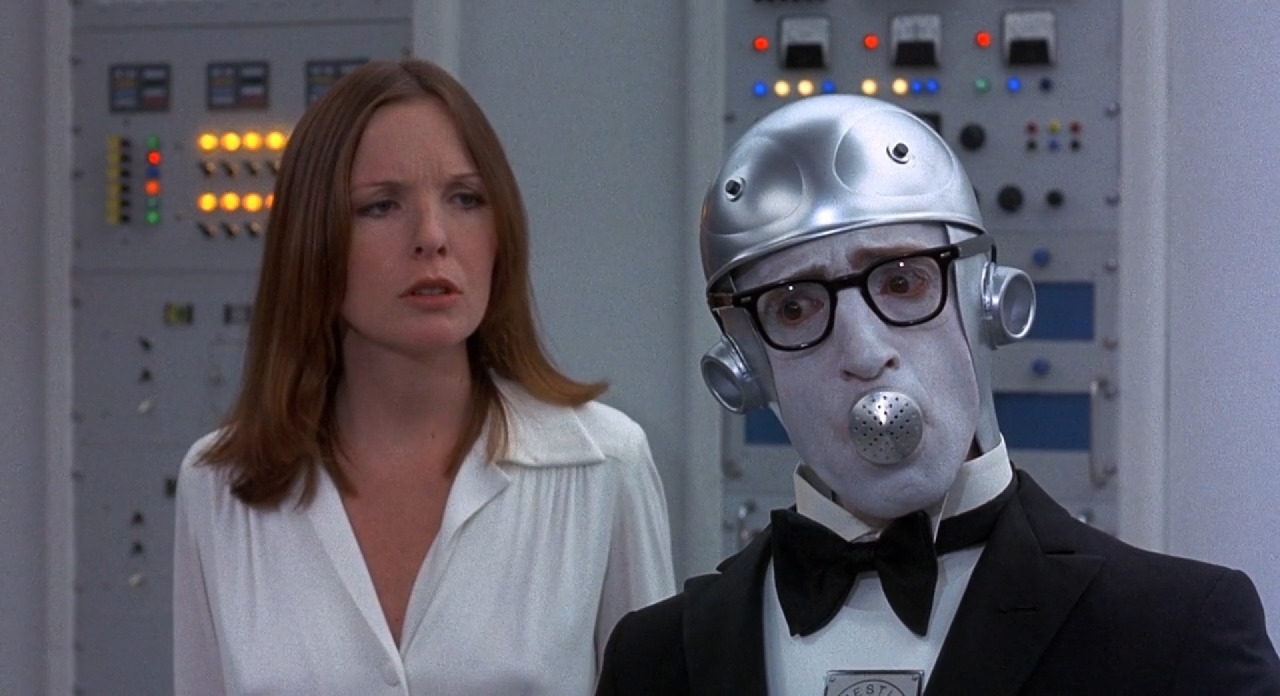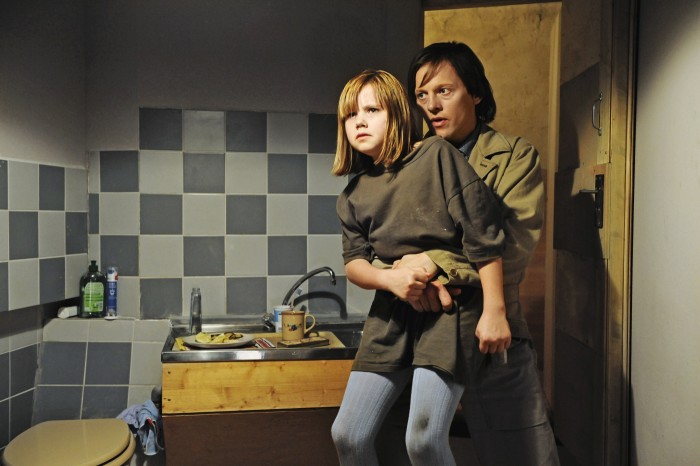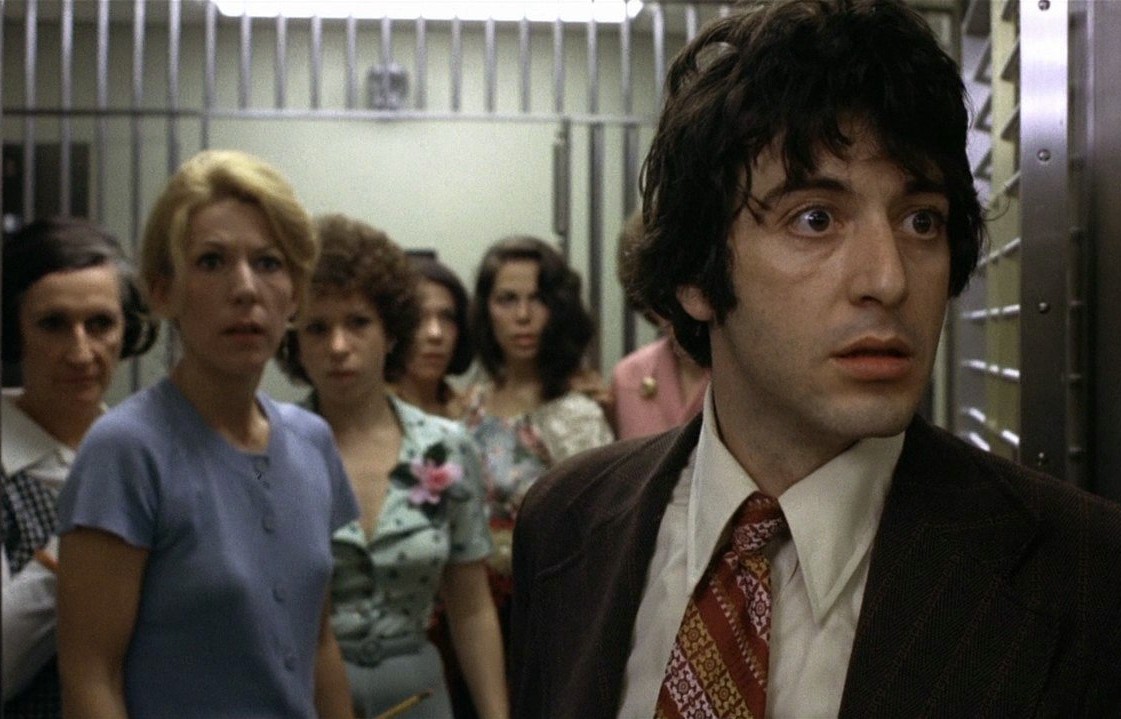
One of many cinema aspirations is the examination process of the creation of psychological ties between movie characters. It is worth noticing this is not only the aim of realistic or psychological movies, but also any movie that wants to honestly show interpersonal relationships, to justify often controversial choices, and to bring many different types of relationships to the audience – even the less obvious and incomprehensible ones.
The most interesting and also very controversial, one that arouses lots of ambivalent emotions, is relation called Stockholm syndrome. This term took the name from an accident that took place in Sweden’s capital in 1973. On August 23, two men walked into a bank with the intent to rob it.
When notification of the burglary reached the police, the robbers took the hostages (three women and one man) and detained them for six days. At the same time, when the rescue team arrived, the hostages did not want to cooperate with them at all. They defended the kidnappers and accused the police.
Psychology finds Stockholm syndrome to be a mechanism of survival; a fight for life. It comes out in extremely traumatic situations, like in the face of kidnapping, imprisonment, sexual abuse, being taken as a hostage, a prisoner of war, or member of a sect. It also may happen in romantic (or sexual) relationships founded on domination. The consequences of this syndrome may appear after a long time, after the end of a crisis.
Stockholm syndrome has been processed in many areas, including movies.
15. King Kong (2005)

The most epic realization of the syndrome was displayed in the tale of a giant ape from Skull Island – which isn’t strange knowing that this particular iteration was directed by Peter Jackson. The action takes place in New York during the 1930s, during the Great Depression.
Filmmaker Carl Denham (Jack Black) wants to direct his dreamed-of adventure movie, and with his crew, including the unemployed actress Ann Darrow (Naomi Watts) and traveler Jack Driscoll (Adrien Brody), he begins his journey on the SS Venture toward the mysterious Skull Island.
On the spot they find out that on the island, primitive tribes live and pay their tributes to a gigantic gorilla. Ann is the next victim who is abducted, and the crew embarks on a rescue mission, only to find that Skull Island is trapped in time, and is inhabited by dinosaurs.
Meanwhile, Ann and King Kong form a relationship, which in times develops into Stockholm syndrome. Watts’ character starts to develop sympathy and understanding for her extraordinary captor; she tries to humanize him and read his intentions.
It might also be said that this relationship is a pop cultural variation of the mythological love between the beauty and the beast; a love loaded with insecurity, a fear of abuse, and the most humane – a fear of the unknown. What’s worth pointing out is that this unusual relationship led to demise of the captor, as in the end, he was one who was captured.
14. Three Days of Condor (1974)
Over the years, this Sydney Pollack movie became an iconic spy picture. It tells the story of Joe Turner (Robert Redford), an employee at a small intelligence agency; the workers at this agency have more in common with book moles than with true secret agents.
One day, Turner gets back to his office after short lunch break, only to find that all of his co-workers have been murdered. He immediately informs his supervisors, but instead of receiving help, he finds out they want to eliminate him as well. Desperate and alone, he kidnaps Kathy Hale (Faye Dunaway), a woman he accidentally met. Turner wants her to help him fight a powerful opponent.
Their relationship bears the characteristics of Stockholm syndrome, where fear of death billows into fascination, and lust toward the alleged agent. This relationship is quickly written and less than subtle, but in an interesting way it shows how unusual roles can be taken by both the hostage and the abductor. This particular dialog between the protagonists went down in history of cinema:
Turner: “Have I raped you?”
Kathy: “The night is young.”
13. Sleeper (1975)

This futuristic comedy is one of the most absurd movies made by Woody Allen. The action takes place in the far future – the 22nd century – when a shop owner who hibernated 200 years prior wakes up after operation gone wrong that, in reality, is different from his memories.
He encounters an automated world run by computers, and giant genetically-modified fruits specially designed to fulfill sexual cravings. The neurotic protagonist played by – surprise! – Allen himself, initially dressed as a robot, is mixed in the romance with his owner and has an underground fight with the totalitarian system.
The motive of Stockholm syndrome here is also treated in a more humorous and grotesque way. The character played by Diane Keaton became convinced of the revolutionary ideas of her pseudo-robot/kidnapper, which in effect changed her comfortable lifestyle, and then the roles turn around.
This controlled madness doesn’t tell much about the complicated nature of Stockholm syndrome, but it brings to attention that this issue isn’t always understandable or logical, but is rather based in very extreme emotions.
12. V for Vendetta (2005)

The adaptation of the classic comic book by Alan Moore takes place in an England run by a totalitarian government, where society is absolutely controlled and manipulated by those in power.
The only person who still resists is a freedom fighter dressed as Guy Fawkes, who fights with the ruling system by means of terrorist attacks on the main radio and TV stations and governmental buildings. One day, he frees Evey Hammond (Natalie Portman) from the hands of government agents, which leads to her realization that V isn’t a terrorist but rather a person with ideas long forgotten by her nation.
Similarly to “Sleeper”, the abductor convinces his victim to follow the radical change of opinion of social and political matters. The Wachowski sisters and James McTeigue show this much more realistically (in spite of the comic book’s basis) and in much more convincing manners.
The tortured Evey doesn’t learn that V was the one bringing her all her suffering until it’s finished and her perception is already changed. The protagonist behaves like the typical victim of Stockholm syndrome – she falls in love with her captor and helps him in his antigovernment crusade.
11. Buffalo ‘66 (1998)

This film is the directorial debut for actor, model and musician Vincent Gallo, who also plays main role of Billy Brown. Billy, after his release from prison, doesn’t see any sense in continuing his existence. He doesn’t have a girlfriend or any friends. All he’s got are his crazy parents, and all what he want to do is to kill the man whom he blames for his unjust punishment and suicidal ideations.
Before that, he decided to visit mom and dad for the last time. By the way – he kidnapped a random girl (Christina Ricci) and ordered her to pretend to be his girlfriend in the presence of his parents. In the meantime, the girl falls in love with Billy and she decides she wants to spend rest of her life with him.
Gallo created a brilliant, acrimonious, and traumatized ex-con, who can be only saved by an instant dose of true affection. Ricci is a girl who quickly notices the potential and goodness hidden deep down in Billy’s heart.
She also suffers from Stockholm syndrome because she is treated harshly, sometimes even coarsely, but she believes that she is just the person who can get Billy back on track. It is common sign of Stockholm syndrome that occurs in toxic relationships. Due to purposeful exaggerations, the movie discusses the issues of interpersonal values in a unique way.
10. 3096 Days (2013)

Sherry Hormann is probably best known as director of the film “Desert Flower”. “3096 Days” was released four years later, based on the ready-made story and autobiography of Natascha Kampusch (under the same title). This case is in some way exceptional because Kampusch herself does not categorize her instance as Stockholm syndrome. Telling the truth, it is truly hard to deny that many components suit that description.
The film tells a story about a 10-year-old Austrian girl who spent 3096 days (eight years) in a cell owned by Wolfgang Priklopil (Thure Lindhardt). This man spent her entire life using violence, mental abuse, and starvation to torture her.
On the other hand, she grew really attached to him. It’s hardly surprising, as he was the only person with whom she had contact, and there was attachment on both sides. In the end, she truly missed her torturer; subsequently, Wolfgang threw himself under a train after he lost the only person in the world with whom he was close.
9. Dog Day Afternoon (1975)

In this legendary Sidney Lumet movie, two unemployed Vietnam War veterans decide to rob a New York bank, and they have bad luck in doing so. One of the partners resigns at the last minute, the cash registers are almost empty, and cops show up.
Sonny (Al Pacino) and Sal (John Cazale) take hostages and start negotiations; stress unites the kidnappers and kidnapped bank employees, and there is a clear and unusual bond between them. Negotiations with the police start and the charismatic Sonny turns them into a media show.
This example is the most similar to the Stockholm accidents of 1973. The movie clearly shows the circumstances in which Stockholm syndrome can be born, and the meaning of crisis situations. Pay attention to John Cazale’s performance – he was able to show the audience the emotional baggage of his character.